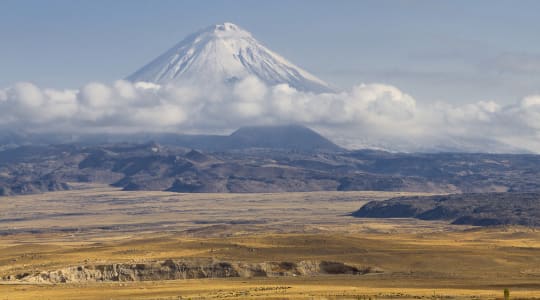Mount Ararat is a dormant volcanic mountain located in Eastern Turkey, near the border with Armenia and Iran. It has a summit elevation of 5,137 meters (16,854 feet) above sea level and is the highest peak in the country. The mountain is of great cultural and historical significance and is mentioned in several biblical texts.
In the Bible, Mount Ararat is associated with the landing place of Noah's Ark after the great flood. It is considered a holy site by the Armenian Apostolic Church, and the Armenian people hold it as a symbol of their cultural identity.
The mountain has been a subject of scientific and cultural interest for centuries. It is believed to have been a site of human habitation as far back as 8,000 BCE and has been used as a pilgrimage site for various religious groups.
Due to its elevation, Mount Ararat is covered in snow and glaciers year-round, and the surrounding area is home to a diverse range of flora and fauna, including endemic species such as the Caucasian lynx and the Ararat grasshopper warbler.
However, access to Mount Ararat is limited, as much of the mountain lies within a restricted military zone, and climbing to its summit requires special permits and a guide. Despite this, the mountain remains a popular destination for mountaineers, tourists, and religious pilgrims from around the world.
Explore Near Mount Ararat
Discover 5 attractions, 5 cities, and 2 airports within 75km. Perfect for planning day trips, finding connecting flights, or discovering new destinations to explore during your visit.
Nearby Attractions & Places to Visit
5 destinations within 24.8km - 51.1km from your location





Nearby Cities Worth Exploring
5 destinations within 25.2km - 54.0km from your location
Airports Near Mount Ararat
2 destinations within 47.2km - 50.2km from your location
Cross-Border Adventures Near Mount Ararat
Discover cross-border adventures near Mount Ararat. Explore neighboring countries with similar attractions and extend your travel experience across borders.










